Photographs: Kushal Chowdury Kushal Chowdury
Kushal Chowdury, who travelled from China to Mongolia to Siberia in 2011, offers a fascinating glimpse into the beautiful Lake Baikal and marvels of Siberia
It is nearly four hours before our passports are returned to us, duly stamped, and the train moves again. It is past eleven and, even here -- so much nearer the North Pole -- on a summer day, the sun has set.
Our first full view of Russia must wait until next morning.
We have not been allowed out of the train for the hours that it has remained stationary at Passport Control near Naushki -- a tiny Russian town on the Mongolia-Russia border. We have also been informed that the restrooms in the trains will remain locked until the train moves again and been instructed to keep our window shut.
Trafficking illegal substances and people across this border is not uncommon, we are told.
Our compartment is not air-conditioned and does not have a fan. It becomes humid and uncomfortable. But, there is nothing we can do except sigh and wipe sweat off our faces and take regular swipes at the numerous mosquitoes.
This is not what we had imagined when we had seen and read of Siberia all these years.
Please click NEXT to continue reading
A journey within: Exploring the mysteries of Asia
Photographs: Kushal Chowdury Kushal Chowdury
The crossing over from China into Mongolia a few days earlier was a vastly different experience.
At Erenhot (also called Erlian) -- a small town in Inner Mongolia and the last station on Chinese territory on the route -- while our passports were processed, we spent the time on the platform, waiting for our train to return from the shed after having its wheels reconfigured for the wider lines in Mongolia and Russia.
It was after dark then too and there was a full moon in the sky. Crickets chirped constantly and the wind carried the smell of dry grass and occasionally a train somewhere in that vast open space whistled and the tracks squeaked.
Elegant lamps lit the platforms, and under one, we sat sipping beer and chatting in low voices and looked up sometimes when another group of travellers, under another lamp, burst into spontaneous laughter.
A little later, we strolled on the tracks and on the platform, pointing out the best looking women to one another, before returning to our spot and continuing with the beer.
We did not speak much and I remembered my time in engineering hostel, lying on the roof on summer nights like this, under starlit skies at the end of aimless days.
At some point during my life since then, my memories of those days of nothingness have become inextricably linked with the melancholic voice of Bhupinder singing Dil Dhundhta Hai (from Mausam), though I doubt if I ever heard the song that much at the time.
Please click NEXT to continue reading
A journey within: Exploring the mysteries of Asia
Photographs: Kushal Chowdury Kushal Chowdury
The stark difference in treatment on the Chinese and Russian borders, we assume at the time, is indicative of the way the two countries operate in general, but I will later find, from travel blogs and the experiences of other travellers, that this is not entirely true.
If one were to make the trip the other way round -- Russia to Mongolia to China -- it is the Russians that allow passengers to disembark and the Chinese that keep them stuffed in the train.
It is, I suppose, simply a case of countries being warier of people coming in than those leaving.
Please click NEXT to continue reading
A journey within: Exploring the mysteries of Asia
Photographs: Kushal Chowdury Kushal Chowdury
Our first view of Russia, the next morning, is still vast uninhabited landscapes like in Mongolia, with minor changes in detail; pine trees now dot the land and the greens of the grass are interspersed with brown patches of soil and slush.
It still remains monotonous, however, until we catch our first glimpse of the Lake Baikal.
When it appears, it is partly shrouded by clusters of pine trees, and only occasionally do the trees relent and allow a few seconds of uninterrupted view.
The waters are calm and grey. The short grass near the banks extends a little way into the water. We stare at the scenery, intensely pretty now, until the tracks veer away from the lake and towards Irkutsk, where we are headed.
We will see the lake again, we know.
Please click NEXT to continue reading
A journey within: Exploring the mysteries of Asia
Photographs: Kushal Chowdury Kushal Chowdury
The Lake Baikal is one of the centerpieces of the Trans-Mongolian and the Trans-Siberian experience.
It is the oldest and deepest of all lakes -- a staggering compilation of fact and mystique.
The biggest freshwater body on the planet, it accounts for 20 per cent of the earth’s freshwater and has been around for an estimated 30 million years.
It continues to grow fairly rapidly and it is predicted that it will, at some point in the future, become an ocean.
It houses over two thousands species of flora and fauna, about two-thirds of which are to be found nowhere else.
Several hundred rivers drain into the Baikal but only one, the Angara, leaves it.
There is a great local legend about the Angara -- that she is Baikal’s daughter and tried to flee him for her lover, the river Yenisei. This enraged Baikal so much that he broke an enormous rock off a mountain and threw it towards her and it lodged right over her throat, trapping her underneath and ever since, all that flows out towards Yenisei are her tears.
The lake remains frozen for large periods and even during the summer months the water temperature hovers close to zero.
A girl we will meet later in the trip, at Yekaterinburg, will explain to us that there are Alien ships hidden in the Baikal and they keep the water temperature low so that nobody can reach the lake’s bottom and learn of their presence.
Please click NEXT to continue reading
A journey within: Exploring the mysteries of Asia
Photographs: Kushal Chowdury Kushal Chowdury
We reach Irkutsk in the early afternoon.
Irkutsk is one of the most important cities in Siberia, and yet, not large enough to have to model itself in crowd-pleasing ways.
The streets are sparsely populated and tastefully narrow, boxed in by short buildings, the doors of which open directly on to the street.
Trams are a primary mode of transport and run throughout the city, their pace as deliberate as ever. In the afternoons, most shops remain shut and much of the city is desolate.
The Angara River flows through it, still wide but not longer clean, and on the other side, a cluster of industrial plants and chimneys rise.
A promenade borders the waters at a place where the grotesque industrial structures are partly hidden from view and in the evenings, families with picnic baskets occupy the grass banks near it.
The weather is warm and humid and the river has a dank smell. Nobody seems to mind it much.
The residential areas, away from the thoroughfare, in the quieter parts, are long lines of wood and dark colours and bright windows. Our hostel is one in a line. When we reach it, across the street, a cat stares out of a framed window.
My recollections of Irkutsk are filled with vivid memorable images like these.
We wander the streets for several hours.
Please click NEXT to continue reading
A journey within: Exploring the mysteries of Asia
Photographs: Kushal Chowdury Kushal Chowdury
It is 2011 and the city is celebrating its 350th anniversary, we learn. Parts of the city are decked up for the occasion -- bright lights and exhibitions and colourful graffiti.
Artists display their work on the pavements and when we stop to look at something, speak to us with great enthusiasm but very little English. Occasionally, we spot cute cafes tucked away in the corners with names that begin with ‘Le’ and ‘La’, pretentiously quaint and completely out of place.
There is, also, a McDonald’s in one of the more touristy parts of the city and, embarrassingly, we even have a snack in it. ;-)
Several locals greet us on the streets throughout, especially at the promenade by the river. They appear to recognise we are Indians, for though none of them speaks any English at all, they all ask “Indian?”
They are thrilled when we say yes, and start rattling off names like Raj Kapoor and Shah Rukh Khan and Seeta Aur Geeta and, remarkably, Mithun Chakraborty.
A couple of young boys on the street even croon ‘I am a Disco Dancer’ and jiggle their legs to it. It is all quite astonishing, really, and I reflect with wonderment on how often strange bits of culture and kitsch travel inexplicably through unexpected places and times.
Throughout our time in Russia, we will continue to meet warm, friendly people who will repeat these names to us. This is not what the guidebooks we have read on Russia have suggested; the picture those books paint are of a surly, unreliable people.
I suppose those books are written, in general, for an American audience, and perhaps, the Russians’ disposition towards that country is not as warm.
Please click NEXT to continue reading
A journey within: Exploring the mysteries of Asia
Photographs: Kushal Chowdury Kushal Chowdury
In the older neighbourhoods, we find several houses, half sunk into the ground. Through the top halves of broken windows, we peer inside dark decayed rooms, hidden by cobwebs, in obvious disuse.
We ask other travellers and the staff at the hostel and learn these are indeed structures that are sinking and not intentionally built.
The permafrost beneath them has slowly melted in recent years, and with its melting, the foundations of these houses have become slushy and unable to carry weight. At some point, they will disintegrate into the ground.
The melting of permafrost that covers most of the Siberian land is now a major concern for environmentalists and some studies estimate a catastrophic portion of it is likely to melt in another three to four decades.
Already, train tracks and industrial structures in various parts of the region require repairs nearly every year, for the bends and breaks in them as the soil underneath melts.
I suppose in a hundred years or so, cities in this region, including Irkutsk, will cease to exist in the way they are today. But nobody appears particularly perturbed about this at the moment. There is simply too much ambition in the world. We tend to believe, in our painfully finite lifetimes, that cities will exist forever and even if they fall, they will re-emerge like they always have, and life will go on, each time a little more tenacious, a little more frenetic.
Please click NEXT to continue reading
A journey within: Exploring the mysteries of Asia
Photographs: Kushal Chowdury Kushal Chowdury
We visit some of the churches of Irkutsk -- The Bogoyavlensky Cathedral, The Church of the Savior, The Kazansky Church, The Cathedral of St. Epiphany -- delightful, warm structures, lean and high, bright exteriors and vivid colours, and set against the otherwise grey shades of the city and the land, they appear resplendent.
In the winter, when the land is covered in snow, they must appear even more so.
Inside the Kazansky Church -- a magnificent brown-blue structure on the outskirts of the city -- we stay for a prayer. The priest is a tall, well-built man with a leonine mane and a French beard, and his deep voice booms spectacularly within the confines of the church.
We understand nothing of the prayer, of course, but, it is delivered in a manic chant, full of authority and righteousness and a slight tinge of anger, and it will remain, without doubt, one of my most vivid memories of the trip.
We return to the hostel late in the night, walking under gloomy yellow streetlamps through deserted streets.
Men huddle in dark corners with bottles of beer, and some of them wave to us as we pass. When one of them discards an emptied can, it’s clank on the street echoes in the dark. There are no lights in any windows anymore.
Our own faces, distorted, stare back at us from them. It is a cityscape (American independent film director Jim) Jarmusch and his vampires might revel in.
Please click NEXT to continue reading
A journey within: Exploring the mysteries of Asia
Photographs: Kushal Chowdury Kushal Chowdury
The next morning, we are to leave for Angasolka -- a tiny hamlet we have discovered from the Internet on the banks of the Baikal, away from the crowds.
It also has a hostel -- The AlpBase -- and we have our beds already booked there for the night.
It is a couple of hours from Irkutsk and there is only one train -- early in the morning -- that can take us to the stop nearest to it, we are told, from where Angasolka is a half-hour’s hike.
We wake up late and rush to the train station and find the train has left and hang around the station, distraught, until a heavyset cop with a limp notices us and asks what the problem is. We try to explain the situation to him, with frantic gestures and monosyllables, since we assume he does not understand English like every other Russian we have met so far, and he sighs and says, “Guys. What do you want?”
We burst into laughter and he chuckles.
He tells us there are minibuses that travel to Slyudyanka -- the westernmost tip of the great lake -- and on the way, we can get down at a place called Kultuk, from where Angasolka is a couple of hours of walking away. We agree immediately and he even walks us to where the minibuses are and speaks to the conductor and gets us our tickets.
The sky clouds over and a gentle rain begin to fall by the time our bus starts and as we leave Irkutsk behind, a mist begins to descend.
Please click NEXT to continue reading
A journey within: Exploring the mysteries of Asia
Photographs: Kushal Chowdury Kushal Chowdury
We reach Kultuk sometime later. The town, a cluster of wooden houses and junkyards, is sparse and quiet.
A faint smell of wet soil and fish hangs over it.
It is just after noon, and sunlight has broken through the overcast sky and mist in places, creating small, shifting oases of brightness in the gloom.
Railway tracks crisscross each other on the outer edges of the town, beyond which lies the Lake Baikal, its immensity more in the imagination than in actual sight for, a few meters from the shore, it disappears behind the mist -- a uniform shade of faded grey that stretches upwards forever.
It is as if we are inside an overexposed photograph.
We spot a grocery store and ask the man at the counter for directions to Angasolka, and are explained it is another 8 kilometers away, after furious consultations between the man and others present, most of whom appear to be in the store for idle gossip and betray no real intention to shop.
One of them beckons us to follow him.
He takes us to where the railway tracks are and we see a station that cannot be larger than the grocery store we were in.
Babushkas occupy the three benches on the platform and when we get closer, we realise they are knitting. There is also a young girl there, pretty and freckled, and it is her that the man addresses. She listens calmly and then turns to us and says, “Railway”. Her arms motion towards the tracks leading away, in the direction opposite to where Slyudyanka is. We nod.
“Walk. 1 hour. Angasolka”, she adds. We nod again. “Spaciba” (thank you), one of us says and she giggles.
Please click NEXT to continue reading
A journey within: Exploring the mysteries of Asia
Photographs: Kushal Chowdury Kushal Chowdury
We start walking along the tracks, which soon begin to merge into one another until only one set remains.
A quarter of an hour on, it bends to the left and the town slips away from view behind a hill.
The Baikal is to our right and the hills, sloping right up to the tracks, to the left.
A dense impenetrable forest of pine trees -- their trunks thin and white with brown-black scabs on them -- rises up from the hills and looms above us.
Underneath our feet, wild flowers and grass have sprouted haphazardly since the snow has melted, except for on the track. Flies and mosquitoes and a million other insects chirp and buzz, and when we walk through the undergrowth, they lift and flee in graceful swarms.
In the distance, an unseen steamer wails forlornly.
Overhead, the sky clears and we see patches of blue and begin to sweat. The mist remains. An hour passes. The scenery continues to be magnificent but unchanged. We are puzzled and starting to tire.
“Weren’t we supposed to be there in an hour?” one of us asks. Ten minutes later, we are positively concerned. A tunnel comes into view but when we reach it, we find the tracks strangely curve around it.
Inside the tunnel, there are remnants of bonfires and habitation -- logs of wood to sit on, pieces of paper and plastic and scribbles on the walls.
I see visions of unkempt Russians in tattered prison clothes, bearded and huge, hiding in the darkness, taking frequent swigs from their flasks, their palms clasped around guns, knives and assorted arsenal.
We rest a while.
When we emerge from the other side of the tunnel, we spot three figures in the distance, walking towards us.
A boy and two girls in their early twenties, French. They have spent the previous day in Angasolka, they tell us, in the same hostel where our beds are booked. It is less than thirty minutes from where we are, they tell us and wave cheerful goodbyes.
Please click NEXT to continue reading
A journey within: Exploring the mysteries of Asia
Photographs: Kushal Chowdury Kushal Chowdury
Eventually, a settlement appears. It is like something out of a fairytale -- a handful of cottages on a slope in the middle of nowhere, partly shrouded in mist, a church, no paved streets, a great endless body of water to one side, a tributary gurgling into it, the distant sound of a waterfall.
The track crosses the tributary over a bridge and cuts through the settlement; we see a railway station that is nothing more than a few cement slabs and one solitary signpost.
The first person we meet is a girl, sitting by herself on the platform, her feet touching the tracks. She is sweet and slightly plump and smiles when she sees us. She confirms when we ask her that this indeed is Angasolka.
She continues to speak to us in Russian to which we respond with “Sorry, we do not speak Russian”, but of course she does not understand this and goes on.
We wait for her to stop, which she does when she realises our utter lack of comprehension. She looks at us dejectedly and we shuffle and stare at each other sheepishly, until one of us lifts his arms in a goodbye gesture and she smiles again and reciprocates and the rest of us follow suit.
“Indian” I say, before we start to walk away, pointing to myself and the rest. Her eyes widen.
“Indian!” she exclaims, “Indian!” and then calls out to a bunch of kids frolicking near us and some of them run up to us while the others hurry off towards the village and soon we have what appears to be at least half the population gathered around us, screaming Raj Kapoor, Mithun Chakraborty, etc.
An old man stands slightly apart from the crowd and mutters the names of Mahatma Gandhi and Jawaharlal Nehru between long strings of Russian and then appears confused and looks at us and asks, “Doto? Doto?”
We interpret this as daughter and provide him with “Indira Gandhi” and his eyes light up and he rambles on.
We pose for pictures, with the kids at first but soon find their parents and elder siblings beginning to slip into the corners of the frames.
Presently, a lanky fellow appears, and says Hello in English and asks us if we are looking for the AlpBase hostel. “I manage the hostel,” he informs us once we have extricated ourselves from everyone.
“And sorry about all that,” he says, pointing to the people who have now broken up into smaller groups, “you are the first Indians to come to our village.”
I ponder over this for a while. If this is indeed true, we will forever remain the first Indians to ever set foot in Angasolka.
Please click NEXT to continue reading
A journey within: Exploring the mysteries of Asia
Photographs: Kushal Chowdury Kushal Chowdury
The hostel is a group of large wooden cottages; we are taken to the one that appears the most recently constructed and is in fact the last building in the village as the booking website had promised it would be; beyond it the lake still remains lost in the mist.
Inside, there are large wooden beds and an enormous table. The smell of fresh wood, polish and adhesives still lingers. I ask about drinking water. The fellow looks deeply hurt. “You can drink from the lake,” he says, “I don’t know why people ask this. It is still the cleanest lake there is.”
He -- his name is Jenya -- then leaves us but returns a few minutes later with bed-sheets and linen and a strikingly beautiful girl. “My girlfriend,” he introduces, “she lives in Irkutsk and visits me on weekends. She wants to meet you guys.” We assure her we are as delighted with the introductions as she is.
They accompany us to the only grocery store in the village where we buy snacks and beer. The bottles are warm and we ask if there are any chilled ones available.
The woman at the counter smiles and looks at Jenya and he too laughs. “Don’t worry, I will show you.” He tells us. He leads us to the lake. “Put the bottles in there. “ He directs. We poke the water with our toes. It is mightily cold. Twenty minutes later, the beer is as chilled as any we’ve ever had.
In the remaining hours of sunlight we canoe on the lake, dive into it and promptly come out again, shivering uncontrollably, and sit by it looking out and thinking that we must think profound thoughts.
Jenya and the girl stay with us and we talk on a great many subjects. He tells us that the owners of the hostel stay in another city and rarely visit. He runs it as best as he can and plans to one day transform the pebbled lakeside near the hostel into a sandy beach.
I try to imagine what it would look like if he does succeed. I hope he does not. As if to demonstrate his intent, he gets up and picks up a few large rocks and flings them to one side.
Jenya scoffs when we suggest that it would do his business a world of good if a motor road were to reach Angasolka. “Never,” he says, “it will ruin everything!” I suspect he is right.
Please click NEXT to continue reading
A journey within: Exploring the mysteries of Asia
Photographs: Kushal Chowdury Kushal Chowdury
We have dinner in what appears to be a makeshift mess that is also a classroom. Children’s drawings are stuck on the walls and there are long benches with desks that face in the same direction. “This is a summer school,” says the lady who has appeared with plates and food, “I teach the kids drawing and paper-craft.”
There is a small, elevated platform in the compound outside, behind which there is the lake and it makes for a priceless backdrop. I ask if they host kids’ performances here and she nods and tells us that the kids are away for the weekend and will return the next day and if we could only stick around for an extra day there’d be a performance in the evening.
We look at each other, the four of us, and shrug like we have several times during the trip already.
The food is delicious. Bread and meat and porridge and Omul fish and hot chocolate milk.
Outside, the sun has set. After the meal, we build a campfire with logs Jenya brings us. We sit around stoking the fire but it begins to drizzle and we have to return to the hostel. The drizzle has turned into a downpour by the time we doze off.
The next morning, I am the first to wake up and when I step out of the cottage, I am greeted by a stunning sight. The rain has stopped. The cloud is still overcast but the mist has lifted and I find that, concealed from view all this time, a magnificent range of mountains lies on the other side of the lake.
Everything is a shade of blue -- the mountains, the water, the clouds.
A residual mist still remains and from time to time descends and momentarily obstructs the view, but soon lifts and the mountains reappear, even more majestic.
A train whistles and soon appears around a bend in the hills and chugs into the station, waits for a minute and then continues on.
I think of a film that could be set here if I were to make one someday. Perhaps, a bittersweet love story, spanning one idyllic year, of a boy from the village and a girl who visits him on weekends? What would it be like spending a year in Angasolka, I wonder.
We leave Angasolka near noon. The newfound mountains on the other side of the lake keep us company throughout and when we eventually round the bend that brings Kultuk into view, we now see Slyudyanka, bigger, denser, beyond it.
The Babushkas are still on the platform, knitting.

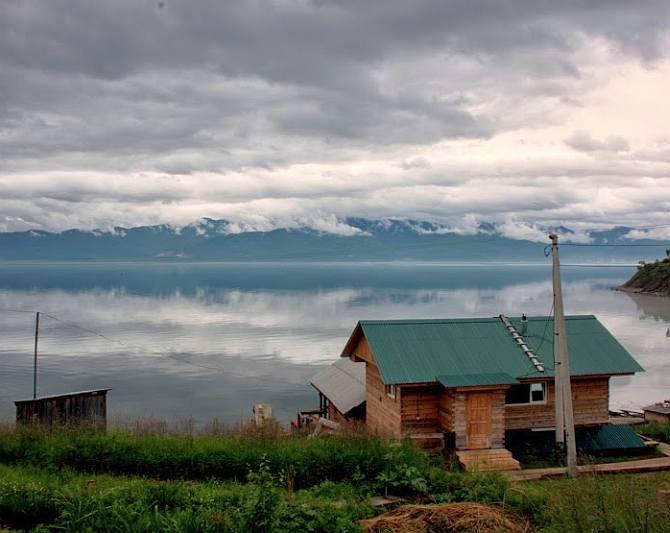

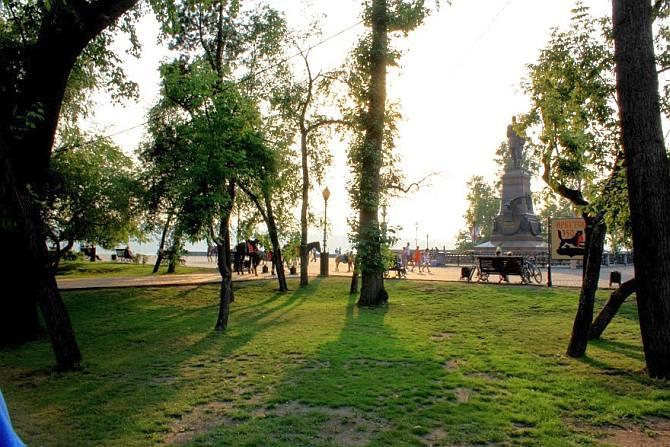
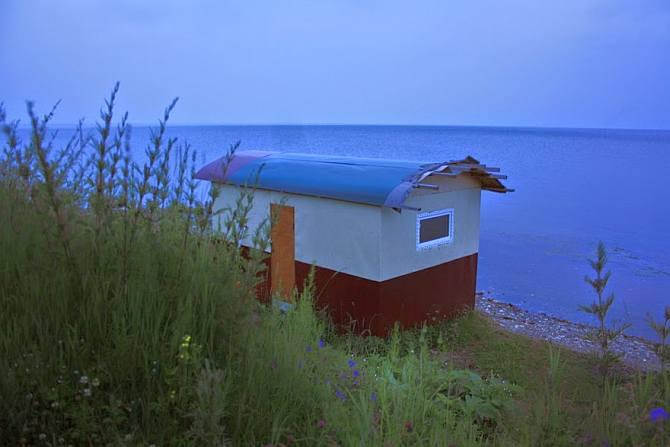
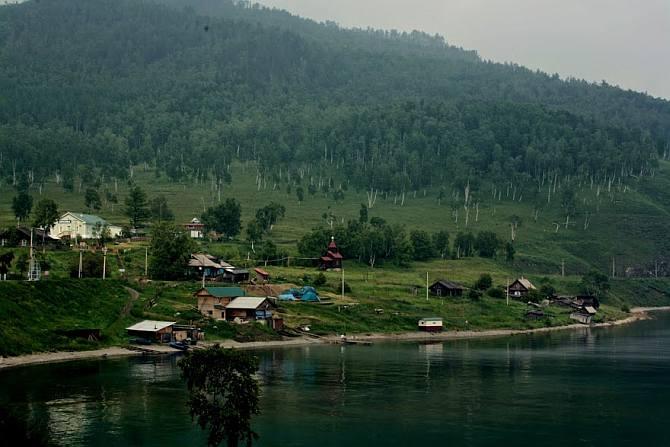
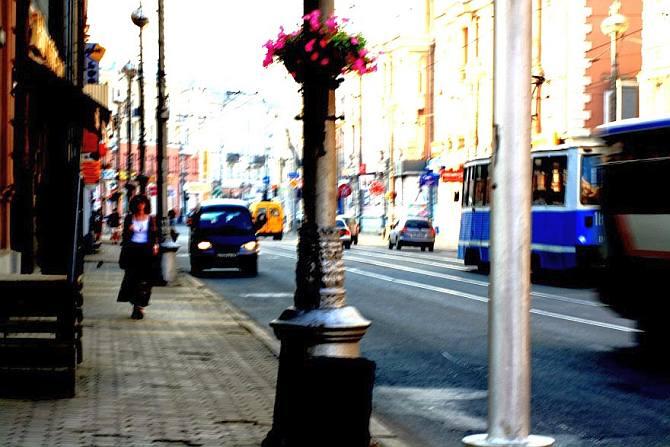
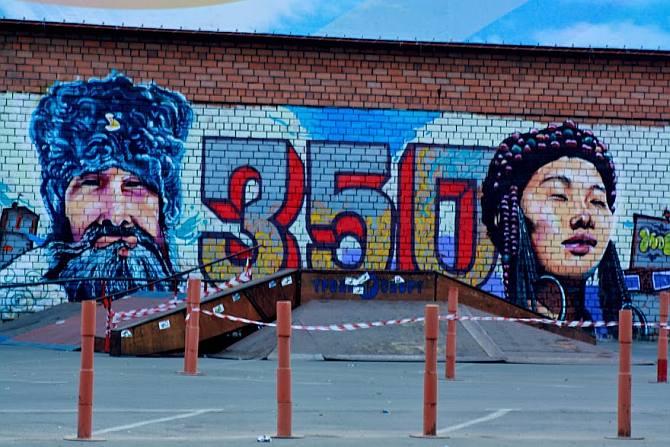


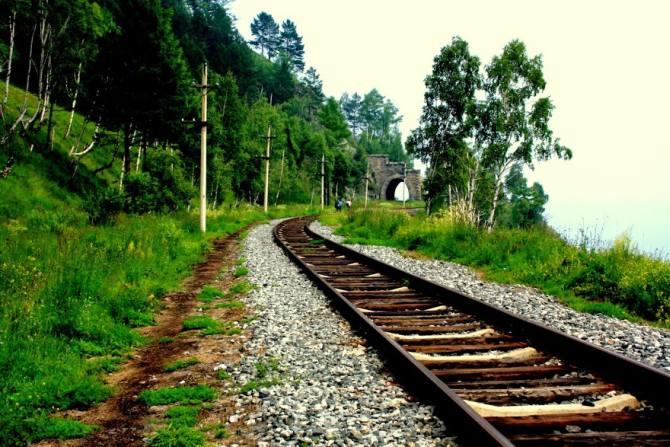
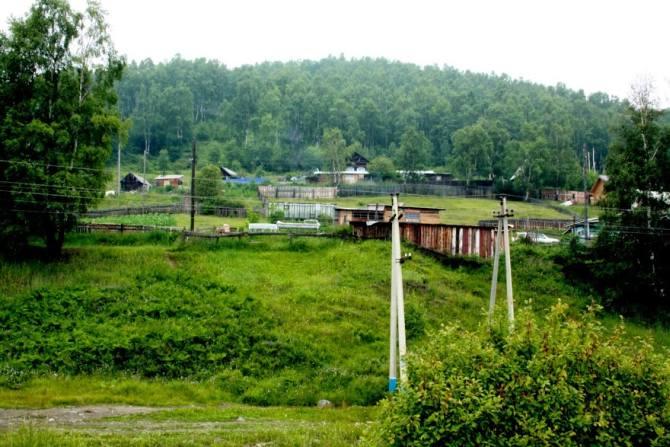


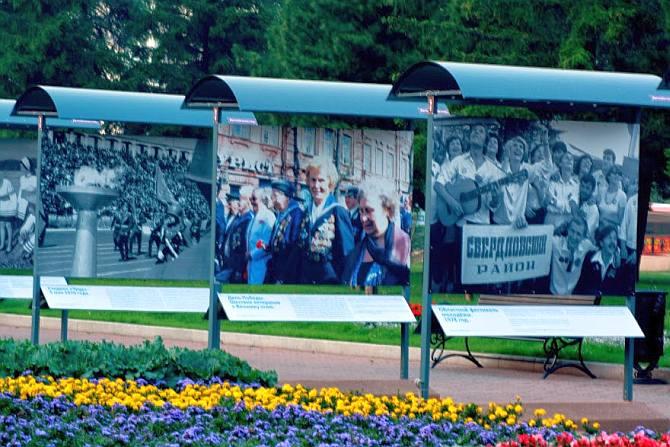

Comment
article